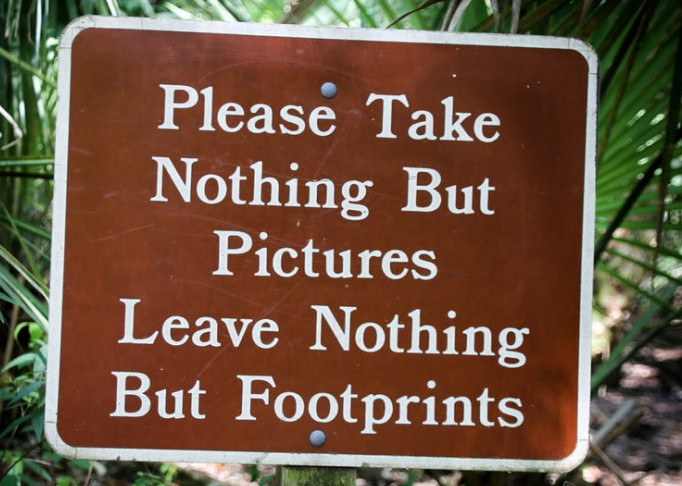 The wild, wilderness, forest (or whatever you call it) can be for everyone to enjoy. I enjoy the peace of it all. When hiking or camping in the wilderness, clean up after yourself. Leaving no trace behind means leaving no trash and leaving things the way you found them.
The wild, wilderness, forest (or whatever you call it) can be for everyone to enjoy. I enjoy the peace of it all. When hiking or camping in the wilderness, clean up after yourself. Leaving no trace behind means leaving no trash and leaving things the way you found them.
While planning your trip, please consider the national Leave No Trace Center for Outdoor Ethics guidelines as a way of life while camping or hiking.
What are the Leave No Trace Principles?
1) Plan Ahead and Prepare
- Know the regulations and special concerns for the area you are visiting
- Prepare for extreme weather, hazards, and emergencies
- Schedule your trip to avoid times of high use
- Repackage food to minimize waste
- Use a map and compass
2) Travel and Camp on Durable Surfaces
- Concentrate use on existing trails and campsites
- Camp at least 200 feet from lakes and streams
- Keep campsite small: concentrate in areas of low vegetation
- Walk single file in the middle of the trail even when it’s wet or muddy
3) Dispose of Waste Properly
- Pack it in, pack it out. Look around the campsite, and trail for spilled food and trash. If you pack it in, pack it out. Dispose of all trash in the proper place. You can find bear-proof trashcans at the beginning of most trailheads.
- Dispose of human waste in catholes (holes dug 6-8 inches deep) and 200 feet away from trails and water sources. Cover and disguise the hole. (Some places require you to pack out human waste as well. Check the rules of the location you have chosen before you leave home)
- Pack out toilet paper and hygiene products
- To wash yourself or your dishes, carry the water 200 feet away from lakes and streams and use small amounts of biodegradable soap. Strain the dishwater of any food remnants and spread the water 20 feet away from lakes and streams. Pack food scraps out and place them in the bear-proof trashcan at the head of the trail.
4) Leave What You Find
- Examine but do not touch historical or structural artifacts
- Avoid damaging live trees and plants
- Leave areas as you found them. Don’t dig trenches or make things like tables and lean-tos.
- Avoid introducing new or non-native species to the area
5) Minimize Campfire Impacts
- Where fires are permitted, use fire rings or already established firepits
- Camp in areas where firewood is plentiful
- Take firepans, lightweight camping stoves (these make fires quick and easy), or build mound fires to leave no trace
- Only use the firewood that’s in the area. Never pack in any wood that is not native to the area you are staying
6) Respect Wildlife
- Do not disturb, feed, touch, or approach wildlife
- Observe wildlife from a distance
- If you see wildlife in need of help, do not approach or attempt to help. Injured wildlife can and may harm you and cost you a hospital visit.
- Dispose of human waste properly. Catholes should be dug 6-8 inches and 200 feet away from water sources. Pack all trash out with you.
7) Be Considerate to Others
- Keep pets under control
- One rule that most hikers/campers live by is when you are going downhill and someone is coming uphill, you move to the side to let them through.
- On some trails, there is an exception that bicyclists, will yield to both hikers and equestrians. Always let your fellow adventurers know you are passing them.
- Let the sound of wildlife and the wild surround you. Please do not make loud noises or sounds.
I hope you enjoy your time adventuring in the wilderness. For more information on the 7 principles, check out the Leave no Trace organization and its mission statement. Please leave nothing behind and take nothing with you. Begin your adventure today!